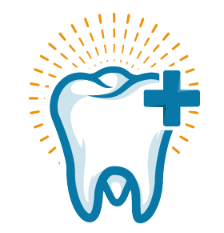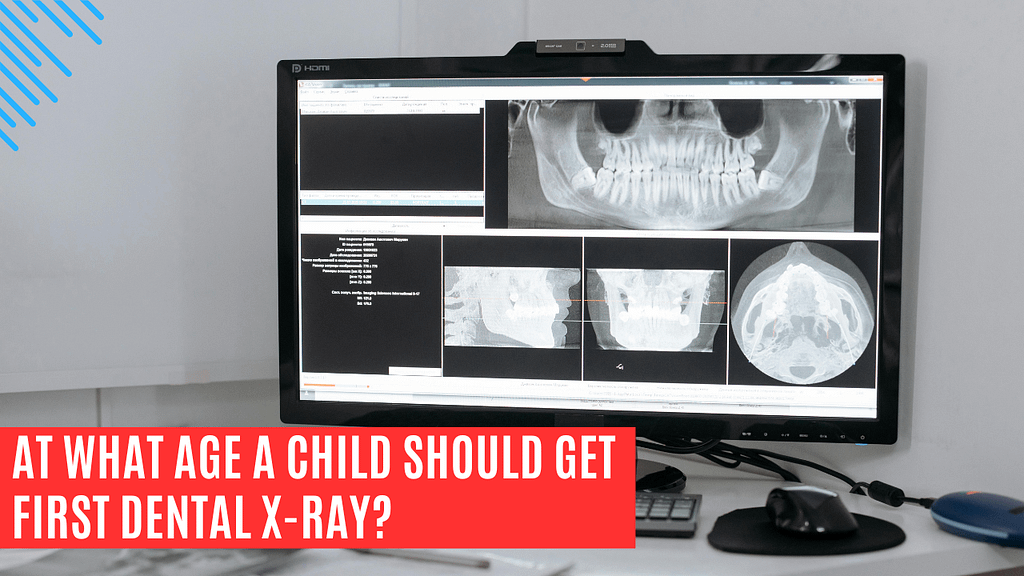We all know that maintaining good dental health in childhood will pay off long-term. Likewise, early detection of oral and dental diseases through dental examinations and x-rays can prevent severe oral infections. Here question arises: At what age should a child get dental x-rays? Can I refuse dental x-rays for my child?
Most dentists and healthcare professionals advise that children get their first dental appointment by the time they are one year old.
In this detailed article, oral directions will provide complete information pediatric dental x-rays guidelines, their importance, limitations, and the ideal age for children.
What Are Dental X-rays?
Dentists use x-rays as imaging tests to see clear pictures of your teeth, gums, and jaw bones.
These x-rays assist in identifying complications that may not be seen during an ordinary dental check-up, for instance, cavities between teeth, bone deterioration, root infections, and overcrowded teeth.
Various types of panoramic radiographs are now used:
- Bitewing X-ray reveals details about the upper and lower teeth found within one area of the mouth, which are commonly used to detect decay between the teeth and changes in bone density arising from gum disease.
- Periapical X-rays concentrate on one or two teeth providing an image including the crown up to the root. They help identify any problems with the tooth root or surrounding bone.
- Panoramic X-ray reveals the whole mouth within a single picture encompassing all teeth displayed by both jaws up to each surrounding entity, such as braces and extractions.
- Occlusal X-ray provides images showing either the floor or roof of your mouth, enabling easy identification of extra teeth, cysts, or other abnormalities inside your oral cavity.
Radiation levels associated with rays are low and hence generally safe, although certain precautions should be taken, mainly in the case of young kids.
Why are Pediatric X-rays Important?
They play a crucial role in diagnosing oral infections and diseases. They can be beneficial in diagnosing any underlying oral condition at earlier stages.
Dentists may inspect teeth for infections, dental bone fractures, tooth decay, osteoporosis, arthritis, and bone cancer.
Moreover, with the help of dental x-rays, dentists can detect the following issues:
- Dental cavities
- Loose teeth
- Tooth decay/ erosion
- Dental trauma
- Jawbone issues
- Infections
- Abscesses
- Check the position of unerupted teeth
- Cysts
- Swelling
- Baby bottle decay
- Toothache
- Periodontal diseases
At What Age Should a Child Get First Dental Radiographs?
The oral health of youngsters determines whether dental x-rays are necessary or not. Generally, dentists propose that the first tooth x-rays in a child should be done between 4 to 6 years of age.
At this age, all their baby (primary teeth) have fully erupted, and any emerging problems with developing permanent teeth might be noted.
However, X-rays may be taken earlier if:
- Dental Cavities:
On occasion, X-rays may be done earlier if a child has increased chances of getting cavities or is already suffering from tooth decay, having poor oral hygiene, or using meals with excess sugar for control purposes.
- Developmental Concerns:
If there are concerns about the way the child’s teeth or jaws are developing, such as crowded teeth, delayed eruption of teeth, and abnormal tooth formation, X-rays may need to be taken at an early age.
- Dental Trauma:
Where there has been trauma to mouth areas or complaints of non-visualized pain experienced by children will require an X-ray to diagnose the problem.
Once initial x-rays have been taken, how frequently further x-rays are needed depends upon a patient’s dental health and history. For most children who are not at risk for dental problems, they may only need an X-ray every one to two years.
At what age a child should get x-rays entirely depends on oral health status.
Reasons Not To Get Dental X-rays in Kids
It is among the essential diagnostic tools used in diagnosing and managing various oral health problems; however, they have some limitations. Here are the main ones:
- Radiation Exposure: Although the radiation involved in dental X-rays is very low, there is still some degree of exposure to harmful rays. This is concerning, particularly when imaging children, expectant mothers, and patients who require frequent imaging.
- Cost: Extra charges by the utilization of rays can affect the total cost of the dental visit. Even though they may be required, diagnostics can add an unwanted cost for the family if insurance does not fully cover it.
- Discomfort: One drawback of this diagnostic tool is patient discomfort. A film or a digital sensor kept in the mouth can lead to gagging for those who have this problem or for children.
- False Positives: There is a small risk of false positives, where an X-ray might show a problem that isn’t there, leading to unnecessary treatments or further test
- Limited Information: Still dental X-rays are valuable, but there can be things that they cannot reveal.
For instance, they cannot identify cavities as small or early-stage gum disease. Sometimes, such tests may be required as supplementary diagnostic tests.
However, with all these disadvantages, they remain vital in dental health as they assist in identifying infections early and preventing serious infections.
Are Dental X-Rays Safe for Children?
The rays are crucial for managing children’s dental requirements since they can be used to monitor the results of previous surgeries and diagnose conditions such as cysts, tumors, decay, and abnormalities of the bone.
Dental x-rays for child under 6 years are only employed when needed and advantageous for the patient. Nowadays, digital dental x-rays are taken instead of film ones, significantly reducing radiation exposure.
Furthermore, the FDA keeps an eye on the X-ray machines that pediatric dentists use and mandates that they have particular settings that further minimize radiation exposure.
Here are some of the vital safety measures taken:
- Digital X-rays: Many dental offices have moved to digital X-rays, exposing patients to less radiation than film X-rays.
- Lead Aprons and Thyroid Collars: The patient will be asked to put on a lead apron and a thyroid collar during the X-ray for children. Personal protective gear is worn to protect the body from unnecessary radiation.
- Targeted X-rays: Dentists recommend X-rays only when it is essential. They usually concentrate on a particular mouth part, minimizing radiation exposure.
- Frequency: Dental X-rays are not used at each visit one pays to the dentist. The frequency varies according to the child’s dental health status and age.
Bottom Line
Dental x-rays in kids are generally safe and often recommended by dentists to diagnose several dental issues.
However, there are certain limitations like exposure to harmful radiation and extra cost associated with them. If done correctly with full precautions, there are hardly any drawbacks.
At what age a child should get dental x-rays should be subjective and depends upon the children’s oral health.
Consult your dentists for a complete guide regarding x-rays. Follow oral directions for more information about dental procedures.
FAQs
Is a dental X-ray safe for a two-year-old?
Yes, these are safe for kids of age 2. While there are some minor risks associated with X-rays, you can rest easy because they are undoubtedly safe for kids
Are dental X-rays recommended every six months?
Each patient’s specific dental health demands determine whether or not dental X-rays are necessary. A patient may require x-rays every six months, while another could only need them every two years.
What are the risks of X-rays on babies?
Babies and kids are exposed to minimal radiation levels during these exams. There is no need to worry as it’s a safe process.

